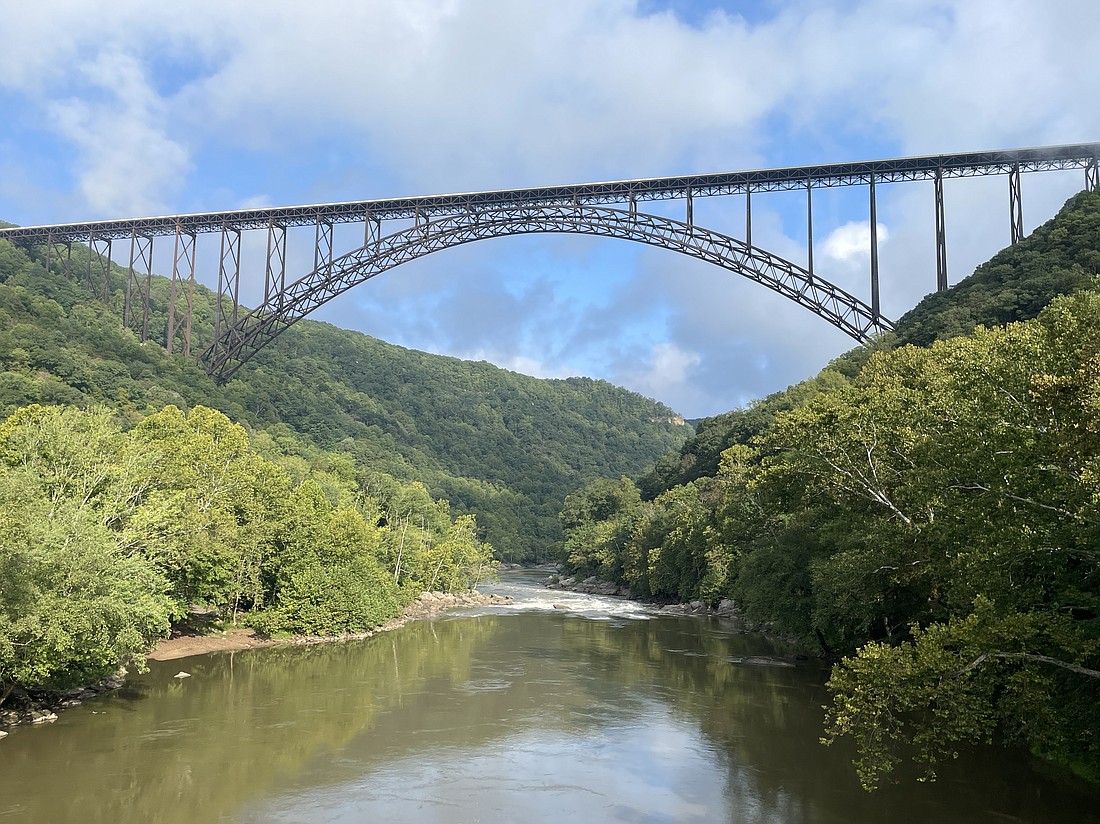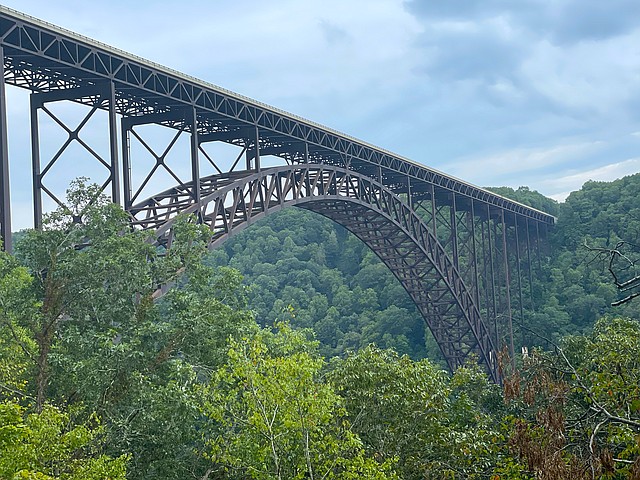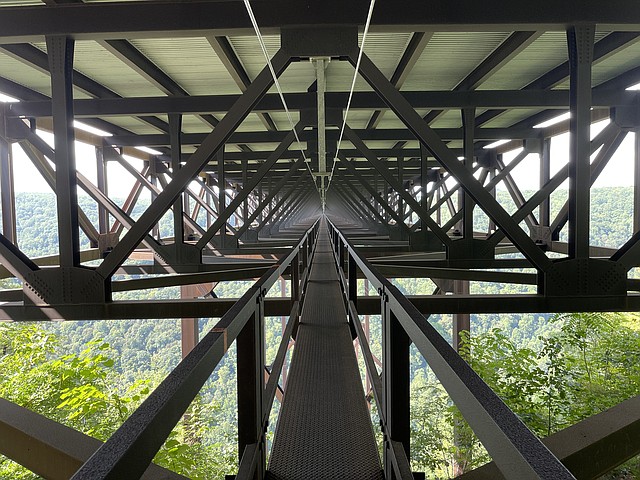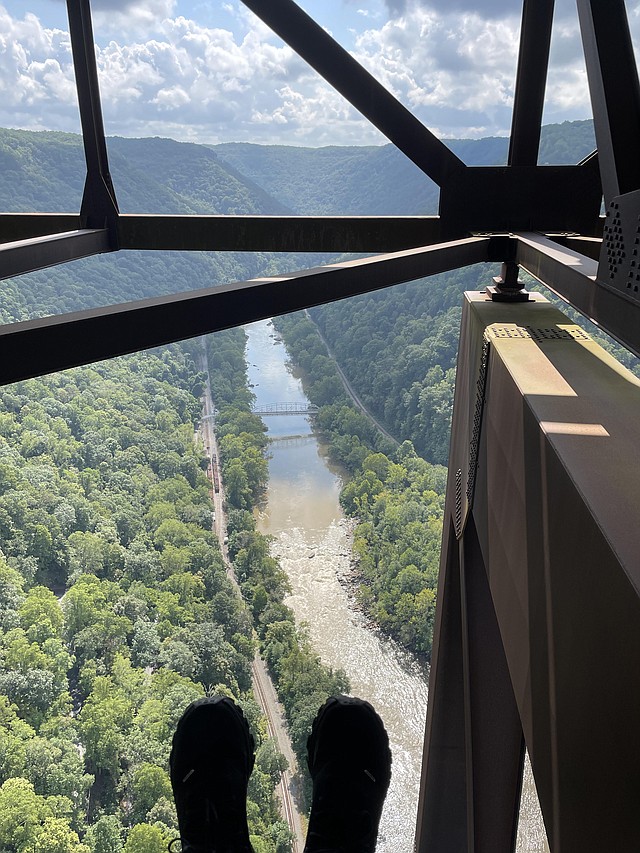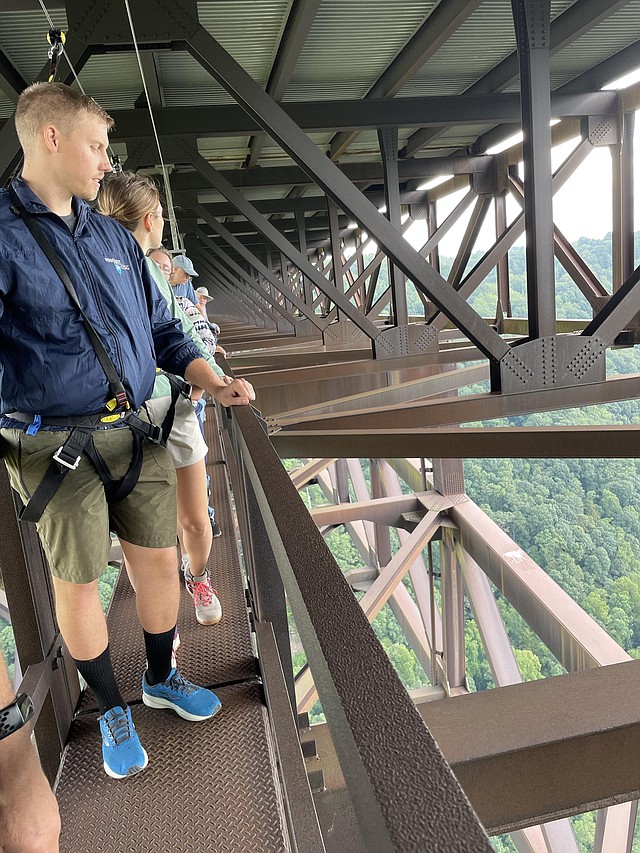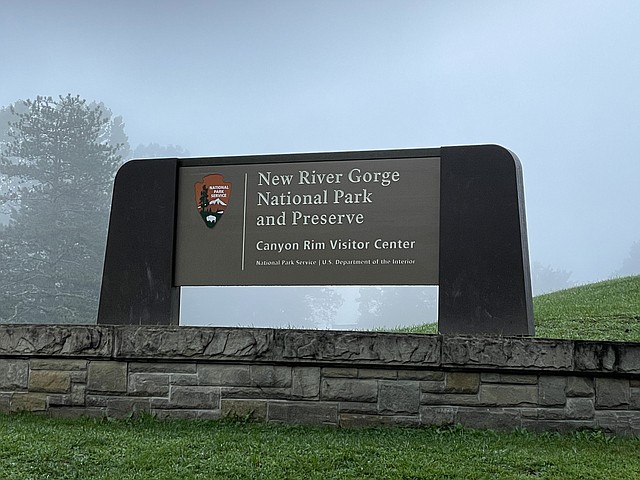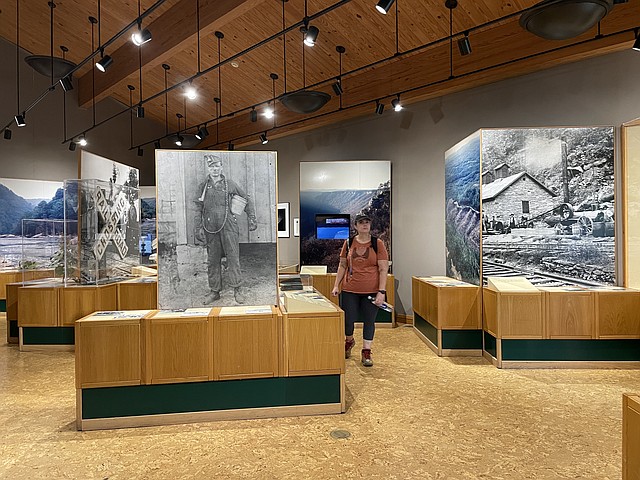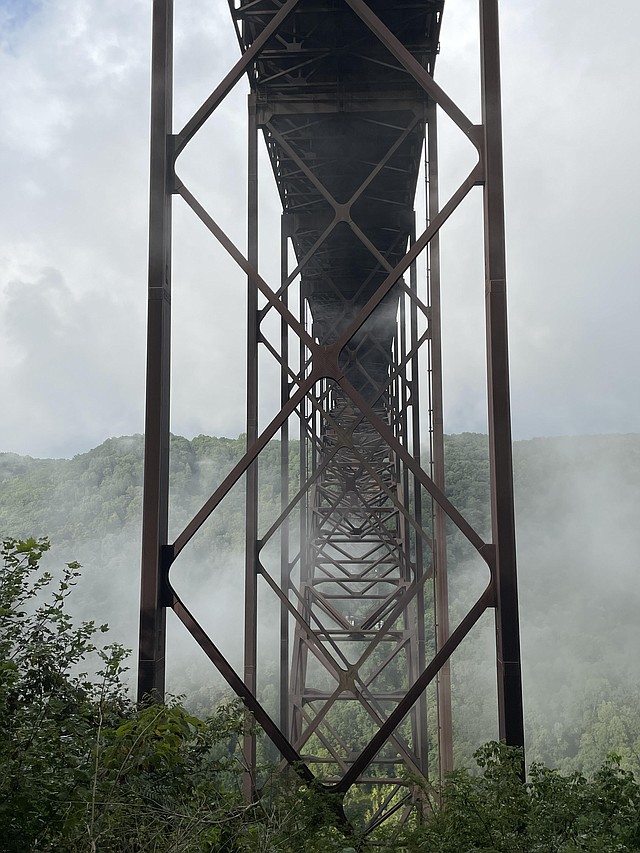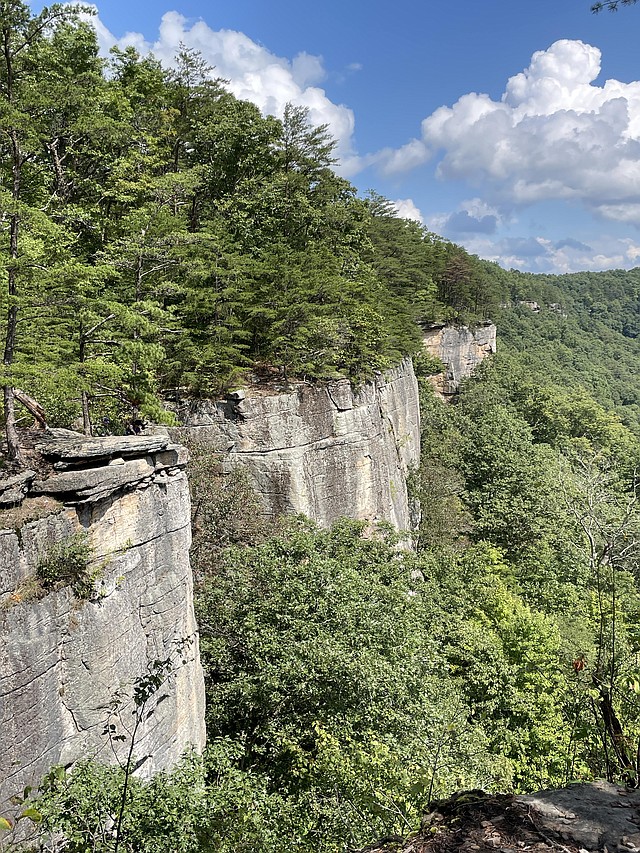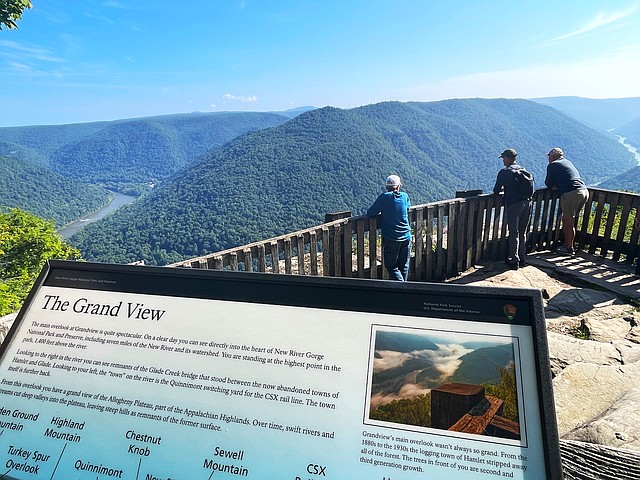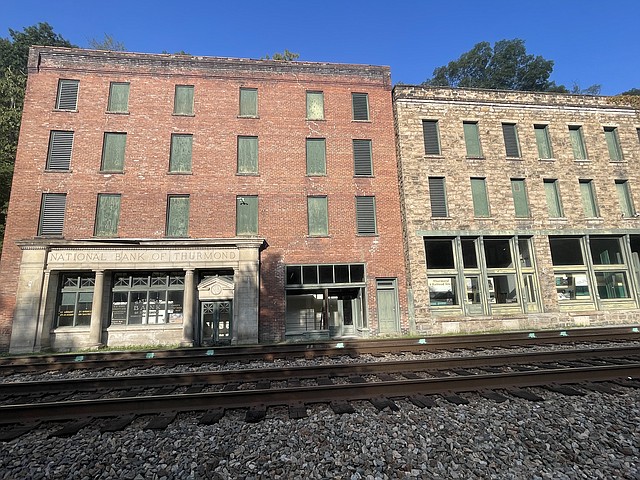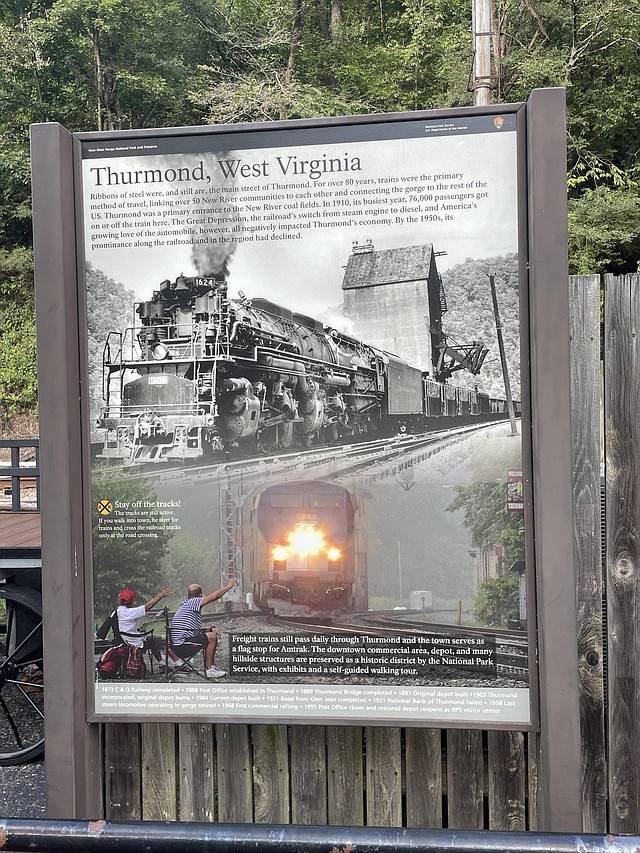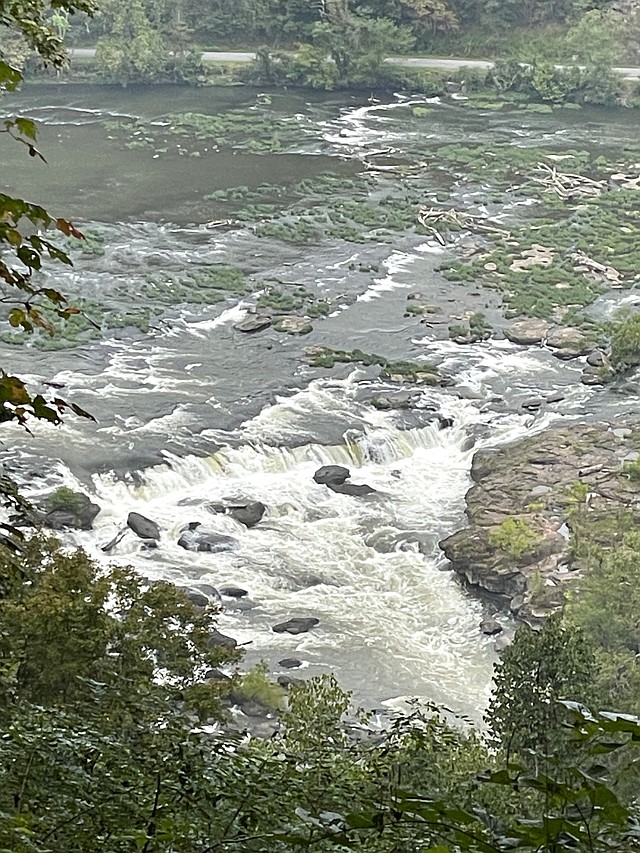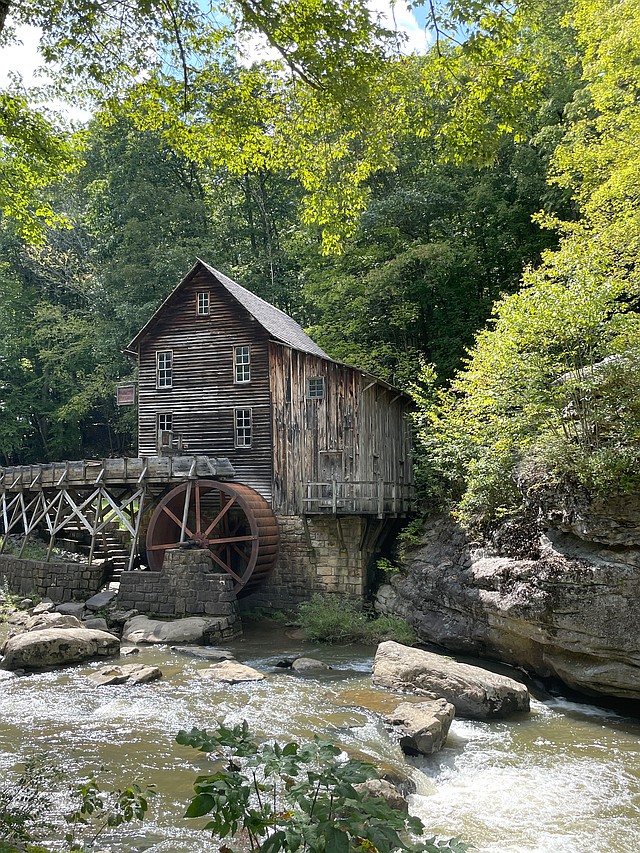Natural splendor and outdoor adventure await at West Virginia’s New River Gorge National Park
November 13, 2023 at 6:00 a.m.
My latest acrophobic adventure was doing the Bridge Walk across the New River Gorge Bridge in West Virginia’s New River Gorge National Park. At 876 feet, this is the third highest bridge in the country and it’s a beaut! A national landmark in engineering, it was constructed in 1977 at a cost of nearly 37 million dollars. Its single 1700-foot arch span design makes it the longest of this style bridge in the world. This marvel is featured on the WVA State quarter, as well as on a U.S. postal stamp and it’s also listed on the National Register of Historic Places.
Though I’ve walked across many bridges in my life, I’ve never done it via a catwalk 25 feet beneath the structure. After checking in to the Bridge Walk office, you’ll get suited up in safety cable attire, then shuttled to the Canyon Rim Visitor Center on the north side of the bridge. A short path leads to the bridge where you enter the catwalk under this massive behemoth.
The catwalk is 24 inches wide and has a substantial railing, plus you are securely fastened onto a safety cable making it impossible to fall from the bridge during a tour. You’ll walk single file the entire 3,030-foot length of the bridge at a leisurely pace. Your guide stops at various junctures to discuss features of the structure and the National Park. There’s plenty of time to take pics and your guide also snaps shots of each participant to have as an included souvenir.
I was initially nervous approaching the bridge, as I didn’t know how I was going to react to the height. But I had seen videos of the experience so I knew what to expect. Once on the catwalk, my anxiety disappeared fairly quickly, as I was too distracted by the glorious landscape and dramatic views. Not only was it amazing to be amid this enormous structure, hearing and feeling the cars go across it (and yes, the bridge does shake), but the bird’s-eye perspective of the scenery was so special. I also felt very safe as I traversed the span and was comforted to hear that the company hadn’t lost anyone yet!
To commemorate the importance of the bridge to the state, Bridge Day is held the third Saturday of every October. Traffic is closed for pedestrians to explore the mighty structure and BASE jumping is allowed for a few hours on that day only. Perhaps I’ll return for the event next year to try this activity – and add another notch to my belt!
The Bridge Walk is a definite highlight of the park, but there’s so much more to do here. A bit of background: New River Gorge National Park conserves over 70,000 acres of land along the New River between the towns of Hinton and Fayetteville within the central part of southern WVA. For reference, it’s sixty miles from the State Capitol of Charleston and two hours from Roanoke, VA.
This is the newest National Park in the U.S., having been granted this status in 2020, bringing the total National Parks to 63. The river itself, however, is not new. It’s actually one of the oldest rivers in the world. For centuries, the area was inaccessible to most people. In 1873, the railroad arrived, making it possible to ship coal, which was in abundance in this region, to the outside world. Communities sprang up and thrived until the 1960s when mining ceased and the people left, abandoning the towns behind them.
Tourism opened up when people discovered the New River had one of the nation’s premier whitewater stretches and rafting took centerstage. In 1978, New River Gorge National River was established to preserve this waterway. And now with National Park status, the place has gained increasing recognition for its rich cultural and natural history, and bounty of recreational activities, from hiking and mountain biking to rafting, climbing, fishing and more.
The main sights of the park are located in clusters along the New River. There are four distinct sections – Canyon Rim, Grandview, Thurmond Historical District and Sandstone - which are spaced at a fair distance from one another, so you’ll need a car to get around.
Most people head to Canyon Rim to get oriented at the Visitor Center and most importantly, to see the New River Gorge Bridge from either or both upper and lower viewpoints. From here, you can drive Fayette Station Rd. and travel back in time before the modern bridge was built. This one-way,100-year-old road has hairpin turns and snakes down to the bottom of the gorge, across a narrow bridge and up the other side. Along the way, you’ll get great vistas of the river and New River Gorge Bridge, along with a few remnants of the communities that were once beehives of activity.
The most popular hikes in this area are the Endless Wall and Long Point Trails. Both offer nice views and are rated easy/moderate, covering about three miles roundtrip. The former leads you out to overlooks along a long line of formidable sandstone ridges high above the gorge. The latter takes you to an overlook with a killer view of the bridge.
In Grandview, the top hikes are the Castle Rock Trail and Grandview Rim Trail Loop. Check out the Grandview overlook first before heading down the Castle Rock Trail. Follow it until it connects with the Grandview Rim to make a loop. You’ll pass through tunnels of rhodies and sandstone walls and get occasional views of the gorge. You can also hike to the Turkey Spur Overlook from the Grandview Rim Trail, where you’ll have an impressive vista of the gorge and winding river amid lush green foliage as far as the eye can see.
If you like abandoned mining town history, drive out to Thurmond Historic District. This was a classic boomtown during the first two decades of the 1900s as coal was king. Thurmond’s banks were the richest in the state, serving as the repositories of the coal barons’ largesse. And the railroad prospered, serving as many as 75,000 passengers a year. Likewise, the town’s stores and saloons were hopping.
This all changed with the switch to diesel locomotives and the shutdown of local mines. Thurmond went into a steady decline, as businesses closed and residents moved on seeking other economic opportunities.
Today, you can stop in at the visitor center, which is in the historic depot, and then take a self-guided walking tour around the area. Careful crossing the railroad tracks as the line is still active, with over a dozen trains passing through the town daily. There are some buildings remaining, particularly along what was called Commercial Row, plus a coal tower and water tanks. You can imagine what the town might have been like in its heyday, but now it’s quiet with the spirit of the past lingering in its ghostly air.
Sandstone Falls are the largest waterfalls in the park and can be found in the Sandstone sector. To see the upper and lower falls, you’ll use a series of boardwalks and bridges. Though pretty, I found the falls to be a tad underwhelming, probably because I am jaded after seeing magnificent, thundering cascades elsewhere.
If you’re a rabid Instagrammer, put Babcock State Park on your list. Located about twenty miles southeast of New River Gorge Bridge, this lovely place is best known for the Glade Creek Grist Mill, one of the most photographed mills in the world. It’s a replica, though functional, of the original Cooper’s Mill that once stood on the grounds.
I was curious when I read about the site and saw the images. I can now attest after seeing it, that it deserves the hype. Oozing with charm, the mill and its surrounds present a very photogenic scene.
As for accommodations, there are no lodging facilities in the park. In the surrounding communities of Beckley, Fayetteville, Oak Hill, Glen Jean, Hinton, Beaver, Sandstone and Mount Hope, you’ll find plenty of options, from chain hotels and motels to inns, cabins and vacation homes. These towns are also sources for food and groceries. Camping is permitted in the park at areas located along the river but know that the sites are primitive and managed on a first-come, first-serve basis.
www.nps.gov/neriwww.bridgewalk.com
Debbie Stone is an established travel writer and columnist, who crosses the globe in search of unique destinations and experiences to share with her readers and listeners. She’s an avid explorer who welcomes new opportunities to increase awareness and enthusiasm for places, culture, food, history, nature, outdoor adventure, wellness and more. Her travels have taken her to nearly 100 countries spanning all seven continents, and her stories appear in numerous print and digital publications.
